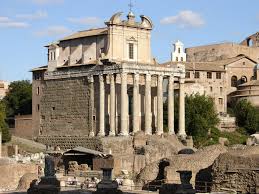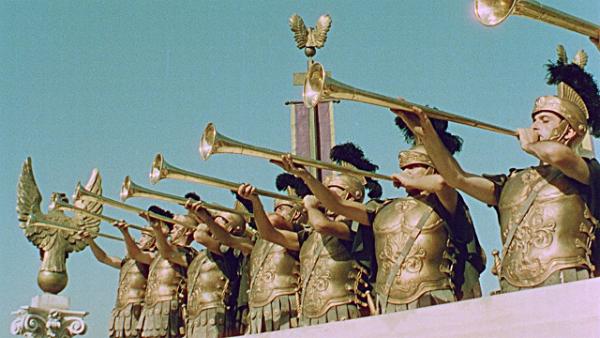For the ancient Romans a new day would begin at midnight, for the Greeks it would start at sunset and for the Egyptians at dawn.
The hours are an ancient invention and were codified by the Greeks in the 5th century B.C. by measuring the distance that the sun covers in the sky.
But it took the Romans around two hundred more years to eventually feel the need to count the number of hours present in the day and another century after that, to finally define them with some precision.
Until the end of 400 B.C. the Romans were still dividing the day in two parts rather than into hours; one part was that period of light that came before midday, the other part was filled with the hours of darkness.
In ancient Rome “Herald” was the title given to an official messenger of the Consuls. The one, who was posted high up on a hill, would monitor the passage of the sun at its meridian point and then instantly notify the population by blowing his trumpet. That signal indicated that labour – which had begun at dawn – could now be stopped.

The Spanish born Roman lawyer and politician Seneca, better known for his philosophical discourses and letters, stated that at the time of the Roman Empire no one knew the exact time. The lack of precision of the mechanical gadgets that were in use – like the Greek sun-dialler and the water clock or “clepsydra” [1] – made such a thing impossible. But so too did the following idiosyncrasies.
Each hour could never be equally divided into 60 minutes of 60 seconds because the duration of that hour would vary according to the Season!
Furthermore , during the “Winter Solstice” the period of the 12 hours of light that followed the sunrise, could begin at any time between 03:40am and 04:30 am , whilst at the “Summer Solstice” it could occur between 06:15 to 07:30 am. Additionally, there were shorter hours in winter and longer hours in summer because – as the Romans well understood – the duration of daylight depends upon the latitude. For example, at Mediterranean latitude one hour was about 45 minutes long in the winter and stretched to 75 minutes [2] in the summer.
Confused?
Even the Catholic Church has contributed to keep us confounded through the centuries!
Tradition informs us that the Angelus is announced by a round of church bell-ringing and it commemorates the coming of Gabriel to announce to Mary that she will conceive the son of God (Luke 1:26–38). It is said that the Archangel’s visit took place on the “twenty fourth hour”. Yet the devotion does not occur at midnight but at sunset or 6pm!
The singularity of Masonic meetings taking place in the afternoon , perhaps now begins to make some sense because Freemasons effectively start their “labour” at the “ancient Midday”, that is to say on the 12th hour after sunset.
In winter – as it has been already explained – this “ancient Midday” could begin anytime between 3:45am and 4:30am and so if we add 12 hours we obtain 15:45 -16.30pm, i.e. the traditional opening times of our Lodges!
When the Warden , in response to the Worshipful Master’s question , answers by saying that he is placed in that part of the lodge “(…) to mark the sun at the meridian, to call the Brethren from labour to refreshment and from refreshment to labour” [3] he is effectively impersonating the herald from ancient Rome.
What this signifies is that old traditions and past events have had a significant incidence in the formulation of the Masonic ritual. History is as important as philosophy, religion and esoterism in Masonic ideology.
The author forbids any reproduction or publication of this article, in full or in part, without his explicit authorisation.
Inspired by Vittorio Vanni’s article titled: “Le Ore di Apertura e di Chiusura dei Lavori nel Rituale Massonico” (1998)
[1] An instrument in which time is measured by the regulated flow of liquid into or out from a vessel (http://en.wikipedia.org/wiki/Roman_timekeeping (Wilkipedia)
[2] http://en.wikipedia.org/wiki/Roman_timekeeping (Wilkipedia)
[3] And even when – in another part of the ritual – he answers with: “it is high time, Worshipful Master”, where “high time” refers to the hour when the sun is at its tallest point in the sky.
- His Majesty’s Servant , David Garrick Esq – Freemason ? - June 7, 2024
- Influencia de la Masonería en Chile - April 29, 2024
- Pomegranate in Freemasonry – its significance - March 11, 2024

